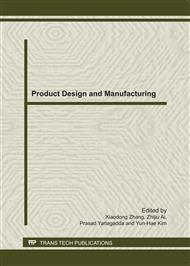p.227
p.231
p.236
p.241
p.245
p.251
p.255
p.259
p.263
A New Mesh Variables Mapping Method for Vehicle Crash Simulation with Considering Sheet Forming Effects
Abstract:
In finite element analysis for vehicle body components, there are different meshes between sheet metal forming and crashworthiness analysis. In order to transfer mesh variables between different mesh models, a new mapping method for mesh variables is proposed in this study based on an inverse isoparametric mapping. In this method, the mesh variables, such as thickness distribution, stress and strain, are mapped by accurately positioning crash model’s nodes to transfer data from the sheet metal forming model to crash model. As an example, this approach was applied to the crash simulation analysis for a vehicle front bumper bar. The results showed that this method allows to precisely transfer mesh variables from sheet metal forming analysis to crash simulation analysis with considering the forming effects. The efficiency and accuracy are thus improved for vehicle crash simulation with this approach.
Info:
Periodical:
Pages:
245-250
Citation:
Online since:
September 2011
Authors:
Price:
Сopyright:
© 2011 Trans Tech Publications Ltd. All Rights Reserved
Share:
Citation:


